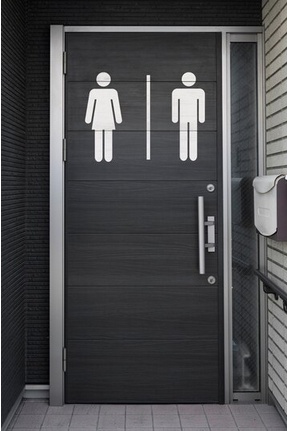Introduction
Toilet door are an often overlooked yet essential aspect of our daily lives. We interact with them routinely without pausing to consider their historical significance or the evolution they have undergone over time. However, behind these seemingly mundane barriers lies a rich tapestry of cultural, social, and technological developments that have shaped the way we perceive and utilize them. In this exploration, we delve into the captivating history of toilet doors, tracing their origins, evolution, and the profound impact they have had on human civilization.
The Dawn of Privacy: Origins of Toilet Doors
The concept of privacy in sanitation practices dates back to ancient civilizations. In ancient Egypt, for instance, evidence suggests that rudimentary toilet enclosures were utilized in homes, offering a semblance of privacy to users. These enclosures, often made of reeds or woven mats, marked the earliest semblance of what we now recognize as toilet doors.
Similarly, ancient Roman society saw the emergence of public latrines equipped with partitions, providing users with a degree of privacy while attending to their needs. These partitions, though rudimentary compared to modern standards, laid the groundwork for the development of more sophisticated toilet enclosures in later centuries.
From Functionality to Artistry: Evolution of Toilet Door Design
Throughout the Middle Ages and into the Renaissance period, toilet door design underwent significant advancements, driven by both functional and aesthetic considerations. In medieval castles and manor houses, wooden doors with simple latches were commonplace, serving primarily utilitarian purposes.
However, as architectural styles evolved and the concept of personal space gained prominence, toilet doors became increasingly elaborate. Intricate carvings, ornate handles, and decorative hinges adorned the doors of affluent households, reflecting the social status and taste of their owners.
During the Industrial Revolution, advancements in manufacturing techniques led to the mass production of standardized building materials, including doors. This period saw the widespread adoption of prefabricated toilet doors, often made of metal or pressed wood, which were more affordable and accessible to the burgeoning urban populations.
Cultural Significance: Toilet Doors as Social Constructs
Beyond their utilitarian function, toilet doors have played a crucial role in shaping social norms and conventions surrounding bodily privacy and hygiene. In many cultures, the design and placement of toilet doors reflect deeply ingrained beliefs and taboos regarding cleanliness, modesty, and gender roles.
For example, in some traditional Japanese households, toilet doors are designed with gaps at the top and bottom, symbolizing a belief in spiritual accessibility and communal living. Conversely, in Western societies, where individualism and personal space are highly valued, toilet doors are often solid and opaque, providing maximum privacy to users.
Technological Innovations: The Modernization of Toilet Doors
The advent of modern plumbing and sanitation systems in the late 19th and early 20th centuries revolutionized toilet door design and functionality. Flush toilets, coupled with indoor plumbing, necessitated the development of waterproof and durable materials for door construction, leading to the widespread adoption of materials such as stainless steel, fiberglass, and high-density plastics.
Moreover, the integration of electronic components and sensors in toilet facilities ushered in a new era of automated doors, offering hands-free operation and enhanced accessibility for users with disabilities. These technological advancements not only improved hygiene and convenience but also transformed the way we interact with and perceive toilet doors in public spaces.
Contemporary Trends: Toward Sustainability and Inclusivity
In recent decades, there has been a growing emphasis on sustainability and inclusivity in toilet door design and architecture. Sustainable materials such as bamboo, reclaimed wood, and recycled plastics are increasingly being utilized to minimize environmental impact and promote eco-consciousness.
Furthermore, there is a concerted effort to make toilet facilities more accessible and accommodating to individuals with disabilities, including the implementation of wider doorways, tactile signage, and audio-visual indicators. These initiatives aim to create more inclusive environments where all individuals can comfortably access and utilize toilet facilities with dignity and respect.
Conclusion
The history of toilet doors is a testament to the ingenuity, creativity, and cultural diversity of human civilization. From humble beginnings as rudimentary partitions to the sleek, technologically advanced doors of today, toilet doors have undergone a remarkable evolution shaped by social, cultural, and technological factors.
As we continue to advance into the future, it is essential to recognize the importance of toilet doors not only as functional elements of architecture but also as symbols of societal values and norms. By embracing sustainability, inclusivity, and innovation in toilet door design, we can ensure that these integral components of our built environment continue to serve us effectively while promoting dignity, privacy, and accessibility for all.


No comments yet